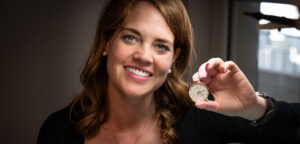“Green diamonds”
Gemstones from the laboratory revolutionize the diamond industry
“Diamonds are a girl’s best friends,” sang Marilyn Monroe carefree in the 1950s. Would she have done the same if she had known that her admirer was possibly helping to finance a civil war by buying the high-carat piece of jewelry?
Diamonds and Africa are linked by a very long history. Nowhere else in the world are such large quantities of the precious gemstone extracted. Unfortunately, the trade in the past also had its dark side, for example, when the proceeds were used to finance weapons purchases in the civil war in Angola. Nowadays, the origin of a diamond is more traceable. In 2003, the Kimberley Process came into force, which largely prohibits the trade in so-called blood diamonds.
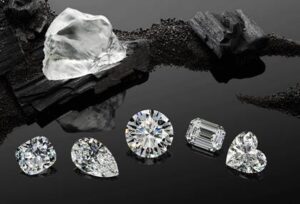
RB Baumgartner relies on synthetic diamonds
Precious stones can also be found in the RB Baumgartner range. The bezel of the LUA model is set with 55 diamonds – but with synthetic diamonds, so-called “green diamonds”. For some years now, techniques have made it possible to grow diamonds in the laboratory. Until now, these gemstones were not of good enough quality to be used in jewelry. But recently, the diamond industry has been in turmoil after researchers found a way to artificially produce diamonds using new special technologies. Stones with several carats are now being grown.
The numerous advantages of the artificially produced diamonds convinced RB Baumgartner to opt for the “green diamonds”:
- 100% conflict-free: LUA diamonds are produced in a Swiss laboratory.
- Conserving resources: To find 1 ct. diamonds under the ground, around 200 tons of earth are moved. The energy input is immense. The production of synthetic diamonds is therefore comparatively environmentally friendly.
- A relatively short production time of 28 days for a rough diamond of 1 ct. Size.
- A difference to a natural diamond is not visible to the naked eye or 10x loupe at the same quality.
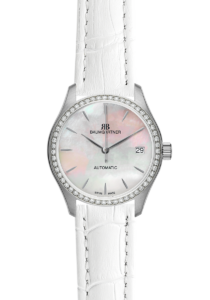
What exactly happens during the production of synthetic diamonds?
The miracle takes place in the same way as in oysters: a tiny element grows into a fabulous piece of jewelry. While in oysters it is a grain of sand that becomes a pearl, in laboratories it is the smallest diamond chips that grow into precious stones. The method is called “chemical vapor deposition” (CVD) and promises great improvements over the conventional method called “high pressure, high temperature” (HPHT), which has been used since the 1950s – both in terms of quality and manufacturing costs.
In CVD production, a splinter is placed in a vacuum chamber for eight weeks, which is filled with hydrogen and methane, which in turn becomes plasma – ionized gas. As a result, strongly charged carbon atoms settle on the shard and cause it to grow. Once the stone has reached a certain size, it is processed in another chamber with laser beams to extract the “seed stone” and give the new diamond a cut.
The artificial stones are then certified by testing bodies such as the International Gemological Institute, given the microscopic label “grown in the laboratory” and a serial number. This makes them clearly distinguishable from naturally formed diamonds.
The diamonds of our LUA are set into the bezel by Sertissage & Co Sàrl in Satigny. We think the LUA shines a little more with its delicate mother-of-pearl dial and synthetic gemstones.

SIMILAR ARTICLES
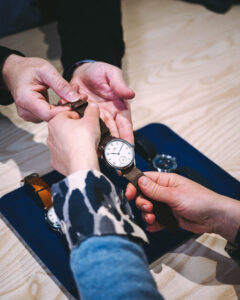
Watch care – 3 simple tips to make your watch last a lifetime
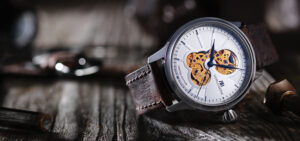
BASCULE: A unique combination of tradition and craftsmanship
